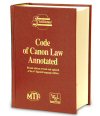Notes on the canon law of “presumed death”
1. A civil certificate of presumed death is not sufficient basis for a bishop to declare a “survivor’s” freedom to marry in the face of a prior marriage per Canon 1085. An ecclesiastical determination of presumed death must be made.
2. In making that ecclesiastical determination, a bishop must find evidence (albeit not proof) of actual death, and not merely of absence, however protracted.
For example, a man books a passage on ship, but he never shows up at the dock, and is not heard from again, even for many years. Such a fact pattern is insufficient for a canonical declaration of presumed death because there is no evidence that the man died. Alternatively, a man books a passage on ship and is seen on the ship before it sinks at sea with loss of life. He is not heard from after the shipwreck. That would be much closer to providing a basis for an ecclesiastical declaration of presumed death, because circumstances pointing to death are present.
3. If a spouse remarries after having received an ecclesiastical declaration of presumed death, but the original spouse is later found alive, the second marriage is null and a petition declaring such nullity should be filed, if necessary, by the promoter of justice per Canon 1674.
Read more about the canon law of "presumed death": CLSA New Comm (2000) at 1798-1799 or GB & I Comm (1985) at 949.









<< Home